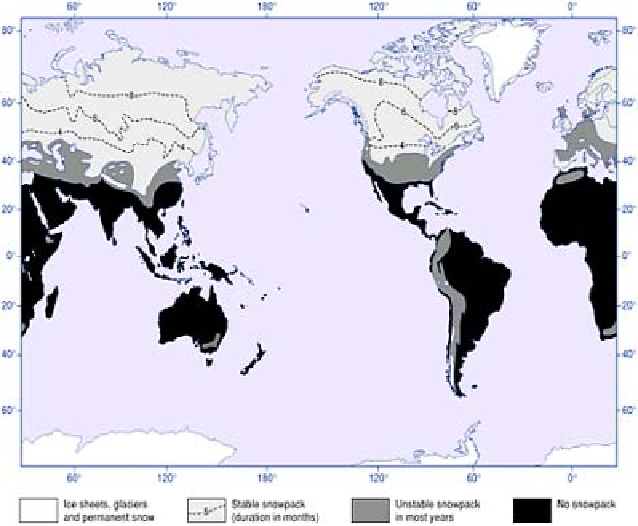Environmental Engineering Reference
In-Depth Information
vascular resistance, designed to prevent excessive water loss and physiological drought.
Losses are more easily estimated as
potential evapotranspiration
than measured by
evaporation pans, evaporimeters and lysimeters, owing to the great diversity of surfaces
and rates involved. By assuming a continuous evaporable water supply, both methods
underestimate water available for transfer and river flow. This is evident in global water
balance and stream flow estimates (Figure 14.5). They emphasize the irregularity of arid
region precipitation and river flow regimes, where
P
<
PE
(potential evapotranspiration)
but
ephemeral stream flow
occurs.
HYDROGEOLOGICAL TRANSFERS
Losses to the atmosphere can occur at any time but what happens next after precipitation
depends on hydrogeological (∆
S
+ ∆
T
) responses to input quantity, type and regime.
Interception and absorption rates by the
Figure 14.4
Global terrestrial snow and ice cover.
Source: After Mackay and Gray (1981).

